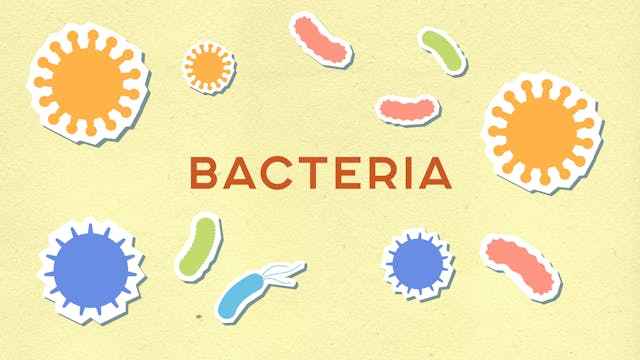Flesh-Eating Bacteria Spreads at Record Rate in Japan

Medically Reviewed By
Dr Divya Rohra
Written By Ankita Mishra
on Jun 19, 2024
Last Edit Made By Ankita Mishra
on Jul 19, 2025

Worried eyes from all over the world are on Japan; the country has been experiencing an outbreak of the disease known as Streptococcal Toxic Shock Syndrome (STSS). This disease can kill the individual infected within 48 hours of the infection being caused.
Streptococcal toxic shock syndrome (STSS) is a critical condition triggered by an infection with Group A Streptococcus (GAS) bacteria, commonly known as Streptococcus pyogenes. Normally, the bacteria GAS only causes strep throat and swelling of the throat; however, certain strains of the bacteria can escalate and show symptoms like severe pain in the limbs, low blood pressure, etc., leading to major tissue loss, which turns fatal.
This is the increasing number of cases of STSS in Japan, which has gotten everyone worldwide on their toes. According to the National Institute of Infectious Diseases, Japan already has around 1000 cases of STSS, which is much higher than last year. There are even speculations that with this rising rate, by the end of the year, the number of cases can reach around 2500 with a 30% mortality rate, which is very concerning.
In 2022, the World Health Organization (WHO) reported a rise in STSS cases in European countries. That hike occurred after the relaxation of the COVID restrictions, so thinking back about it has become a cause of concern.
People have multiple questions about this new disease, which we do not know much about.
Is it fatal?
Can it potentially turn into a pandemic?
How do we take care of ourselves and take preventive measures?
Do Not Worry!
If you keep reading this blog, you will learn all about this flesh-eating bacteria spreading in Japan, including its causes, treatment methods, and how to manage it.
Causes of STSS
STSS does not have only one cause; if not taken care of within a certain time, many infections can lead to Streptococcus Toxic Shock Syndrome. Here are a few of them:
- Skin wounds:
Cuts, scrapes, or surgical incisions have very high chances of getting infected, and if not paid attention to, they can cause STSS, which is fatal.
- Surgical sites:
Post-operative infections can happen if the surgery has lasted for more than 2 hours and many other reasons like the patient being overweight or a smoker, which can cause hindrance in the healing process.
- Respiratory tract infections:
Severe throat infections or pneumonia caused by GAS. Bacteria causing pneumonia are rare. However, it is also one of the causes of a person suffering from STSS.
- Soft tissue infections:
Conditions like cellulitis or necrotizing fasciitis (flesh-eating disease) are major reasons for the person to be suffering from streptococcus toxic shock syndrome.
These are some of the major reasons a person may be suffering from STSS. It is known that this infection is not transferred from one person to another. However, in the rarest cases, it can be possible.
Symptoms to be Recognized:
The symptoms of STSS are severe and appear rapidly. Key indicators include:
- High fever and chills: A sudden and intense rise in body temperature.
- Low blood pressure (hypotension) leads to dizziness and potential shock.
- Rash: Often resembling a sunburn, particularly on the palms and soles.
- Severe pain: Intense pain at the site of infection, which can be disproportionate to the visible severity of the disease.
- Confusion or altered mental state: Resulting from the infection’s systemic impact.
- Multi-organ failure: Impaired function of vital organs such as the kidneys, liver, and lungs.
How to Diagnose STSS?
Diagnosing STSS involves a combination of clinical assessment and laboratory testing:
- Blood cultures:
To detect the presence of GAS bacteria.
- Imaging studies:
X-rays, CT scans, or MRIs are used to locate the source of the infection.
- Blood tests:
To evaluate organ function and identify inflammatory markers.
These methods help in the diagnosis of this fatal condition as it is a disease whose symptoms rise rapidly and, if not diagnosed on time, can lead to the death of the person infected.
What are the Treatment Options for STSS?
Treating STSS requires urgent and comprehensive medical intervention:
- Antibiotics:
Immediate administration of high-dose intravenous antibiotics, usually a combination of penicillin and clindamycin.
- Supportive care:
Intensive care support, including intravenous fluids, medications to maintain blood pressure, and possibly mechanical ventilation.
- Surgical intervention:
In severe cases, surgical drainage of abscesses, removal of infected tissues, or even amputation may be necessary to control the infection.
How to Prevent STSS?
Preventive measures are crucial to reduce the risk of STSS:
- Prompt treatment of streptococcal infections: Early medical care for suspected streptococcal infection.
- Proper wound care: Keeping cuts and wounds clean and properly dressed.
- Hygiene: Regular handwashing and maintaining good personal hygiene to prevent infections.
Importance of Early Intervention:
The prognosis for STSS is serious, with a high mortality rate despite treatment. Early recognition and aggressive treatment are vital to improving survival chances and outcomes. If you suspect someone might have STSS, immediate emergency medical attention is essential.
Streptococcal toxic shock syndrome is a medical emergency that requires swift action. Understanding its causes, symptoms, and treatment options can help recognize and respond to this life-threatening condition.
Key Takeaway:
The increasing rate of STSS cases in Japan is alarming and concerning. This is when everyone else can take their time to learn about the disease and take active preventive measures to avoid any situation that can lead to suffering from Streptococcus Toxic Shock Syndrome. Prevention from any disease is easier, and being a little less reckless can help you avoid a deadly disease like STSS. Then why not take the steps and be careful?



